People
How Akris Creative Director Albert Kriemler Found Inspiration in the Work of Artist Imi Knoebel for His Latest Collection
We caught up with the fashion designer to learn about his latest collaboration.
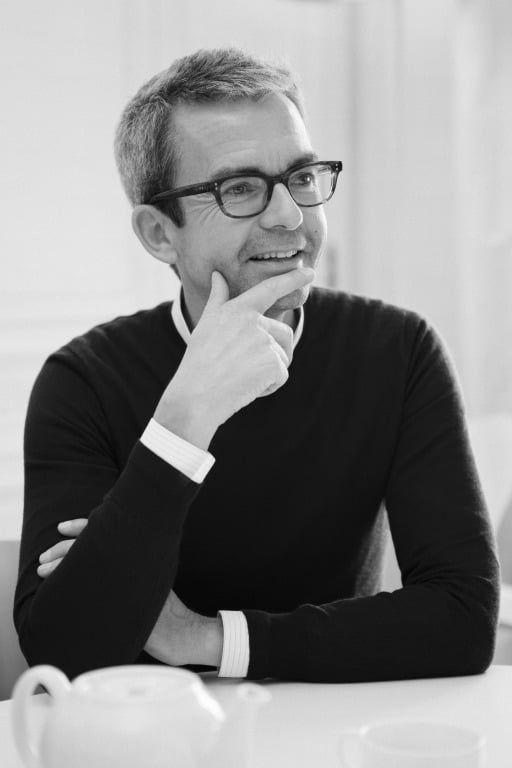
We caught up with the fashion designer to learn about his latest collaboration.

Noor Brara

Perhaps more than any other designer working today, Albert Kriemler, the creative director of the Swiss fashion house Akris, is deeply invested in art and artists, to whom he often turns to inspire his collections.
For Kriemler, each season presents an opportunity to meditate on what he calls a new “artist relationship”—be it a direct collaboration or a series of works he’s inspired by—that he reinterprets in fabrics, patterns, and silhouettes to respond to the cultural moment.
This season, Kriemler joined forces with two artists for what he describes as one of his best collections to date: a futuristic, color-saturated group featuring silhouettes inspired by and conceived with German painter Imi Knoebel, and presented in a stunning film presentation shot by award-winning Dutch filmmaker Anton Corbijn.
Together, the designer, artist, and filmmaker collaborated in unique ways to bring to life the collection, which Kriemler conceived out of phosphorescent fabrics and sequins, techno cotton, linen silks, and more.
We spoke with Kriemler about his latest work.
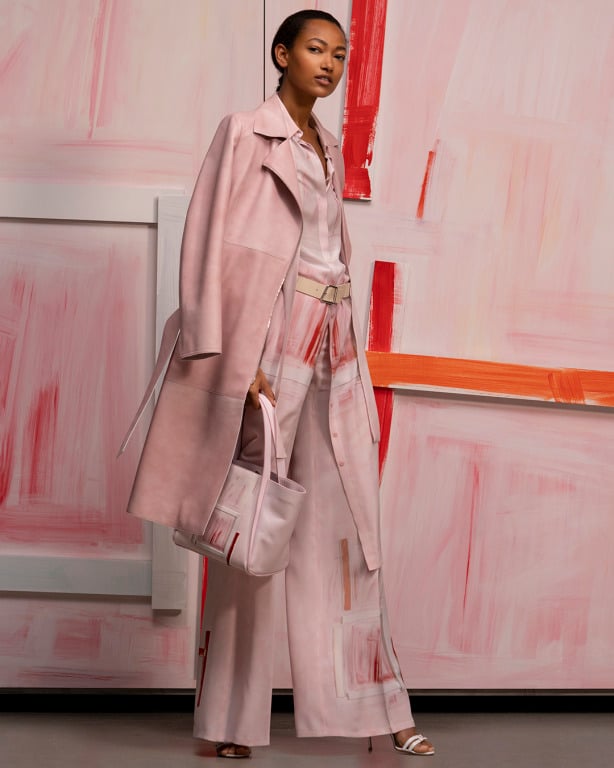
Akris Spring 2021. Photo courtesy Akris
You’ve created this incredible collection inspired by the works of Imi Knoebel, who had a real hand in helping you translate his artistic themes into your works. How did this collaboration come to be? What was it like conceiving it in the middle of a pandemic?
I’ve always been blown away by Imi’s work, in particular his use of color, ever since seeing it in 2004 at the Galerie Wilma Lock in St. Gallen. Working on this collection during the pandemic was indeed very challenging, in part because the pandemic interrupted a process we had already begun earlier in the year. We began meeting in January in Düsseldorf, but then I couldn’t travel until the end of May, which is difficult when you’re doing such a project, because you want to share as much as you can with the artist in person. I like to show the fabrics, the development of the collection, the sketches—all of it, step by step.
I tried to visit Imi in the beginning of May and was rejected at the German border. Two weeks later, I finally got permission to go. We had this incredibly inspiring afternoon with Carmen, his wife, who plays an important part in his process, as his advisor and manager. I laughed for most of the afternoon. When I flew back, I did so with all of these new ideas—and with a piece of phosphorizing raincoat fabric, which was to be a central fabric for the collection.
Going to visit Imi, I had already been working on adapting his works for the clothes—specifically, his cut-ups, his Kinderstern, and the color groups from a series of 1998–99 paintings. In Dusseldorf, I said we should also probably speak about the Batterie [a giant phosphorescent block], an extension to his seminal work, Raum 19.
Imi started that work when he was a pupil of Joseph Beuys’s. The title is a reference to the room number of Beuys’s studio in the Kunstakademie, where the work developed. It’s very minimalistic, but beautiful in its materials and color.

Akris Spring 2021. Photo courtesy Akris.
And you wanted to see how you could adapt that essence for the collection?
Absolutely. I wanted to recreate that effect. It’s something fabulous, and I loved thinking about how fabrics could take all this energy from the sun, and help you through the dark. So I showed him this phosphorizing fabric inspired by this work, which meant so much to me, and he got excited.
The knit dress, which is photographed in the lookbook, was the foundation for phosphorizing. For this season, I stopped doing formal suits and cocktail dresses in the evening, because they are just not needed, you know? But we had been looking to do a transportation of Imi’s linear painting, which you see in the pinstripes of the white suit we did. And then I did embroidered pajamas, jumpsuits and tunics, and last but not least developed sequins in the phosphorizing material. So that’s how it went, each piece has a purpose and is my interpretation of a feeling or color of Imi’s that I feel responds to the moment.
What was it like visiting Imi in his studio?
Visiting him in his kitchen of colors was amazing. It’s covered in swatches of over 700 original shades he has mixed. His atelier is also much more than that of a painter—it’s a wood atelier, a metal atelier, and he has a paper part, too. It’s a full atelier for craftsmanship. He’s always said, “I’m not an artist. I’m a painter and I’m a craftsman.” And I can relate to that, in some ways. He’s convinced that creativity develops in the making of craft.
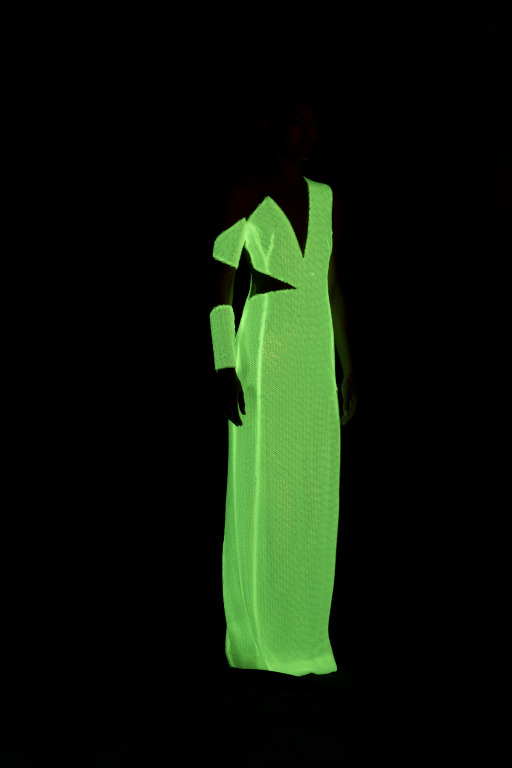
Akris Spring 2021. Photo courtesy Akris.
Aside from Imi’s Batterie work, tell me more about some of the others you chose to focus on—the ‘90s paintings and the Kinderstern, for example. Why those works?
I really wanted to focus on his work from 1998 and 1999, which is a particular color group that only covers five paintings. But I felt that they are very important in the context of his oeuvre, because there’s so much there that’s quintessentially Imi—they have the color, the stick work, the 3D work. They’re very interesting paintings, with the most inspiring color combinations. Having an artist do pink and red, and pink and green, and green and violet is amazing. And they are super hip, these color combinations. But they have eternal value. They’re unbelievably powerful.
I also worked on Imi’s cut-ups, which are very important. The movement and geometry of those works were important, and carry with them another message of Imi’s that I really admire, his ethos of “What can I say about my works that they don’t say? When it goes on the wall, it’s self-evident.”
In a different context, this can also be said of my collections, which can feasibly stand for something—sometimes even something political. But Akris, I’ve always said, stands for nothing but itself. It’s not a new idea that you’d want to build a wardrobe, and that clothes should last. I think this idea is more relevant than ever, but this season, comfort and versatility have been prioritized, which have never been trends for us. They’re the foundational building blocks of our culture. And it’s nice when you see your culture reflected in the mainstream.
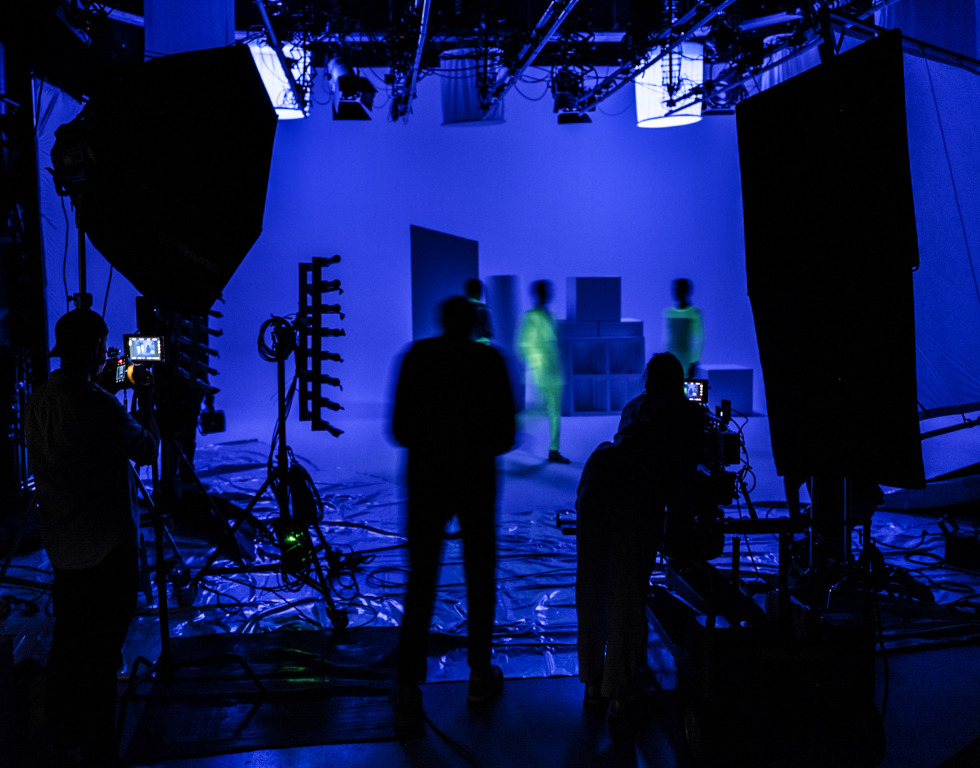
Shooting the film with Anton Corbijn. Photo courtesy Akris.
In lieu of a show this year, you chose to present the collection via a film shot with the director Anton Corbijn. How did that happen?
We were thinking about a show in Paris, but in the beginning of July, we decided not to do that. I wanted to do something special. I didn’t want to do a show in nature, having models walking through grass on video or whatever. I wanted to do something with additional artistic value. I went back to Imi to talk to him about Anton Corbijn eventually collaborating, which he liked, and featuring him alongside his work in the video. If you know how shy Imi is… the only way that we could get Imi on film was to photograph his back.
When we had the idea, I called Anton and he got very excited. He said, “I want to do a film that features Imi’s use of color.” So we did that. We had three models—one is Black, another is of Asian descent, and another is Caucasian. They were all from Berlin, all of them wonderful characters. It all worked out in a really lucky way.
At the end of the day, we’re very pleased with what we’ve done and there were very few arguments, but you want the arguments, too, to be able to discuss the work in fruitful ways. This was a futuristic collection born out of COVID and Imi loved it, and was so nervous in the beginning, but it goes to show you that out of something unexpected can come something surprising and beautiful. And that’s how it should be.
What would you like people to understand about the collection and its presentation on film?
My clothes are never complicated. Modern clothes need to be existentialist, I think. It’s a difficult concept to understand and to apply in fashion—it’s effortlessness and a kind of essence which stands for itself. If clothes are hard to wear, they’re just not modern. They’re already dated. You want to capture a moment of pure presence, a moment of a woman just being herself. This is also something that’s part of Imi’s work—that freedom. The human touch in his artworks is reflected in this collection.
Right now, everyone is open to the beauty of a new silhouette—you know, everyone wants to wear a flat, and every piece is a throw-over thing. Our blouses all look like sweaters—they don’t even look like shirts anymore. And they’re the evolution of that kind of ease. I think everything in the collection is also about wardrobe building—take the pink leather coat, for example. It’s an investment piece, but you can wear it with jeans everyday and it’s perfect over your cocktail dress when you go out, and really it’s good forever. The color is so timeless and the material is going to last. The feel of the clothes is more important than ever, and I think after this moment, we’ll all be more sensitive to it going forward.
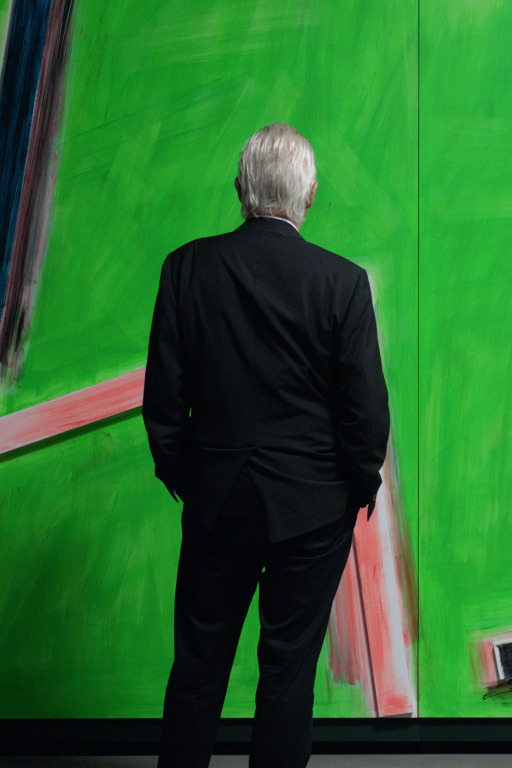
Imi Knoebel shot by Anton Corbijn. Photo courtesy Akris.
You have a very long history of working with or getting inspired by artists, for virtually every collection. Talk to me about that lineage. What is the relationship between style and art, to you?
I need to find a message other than just showing beautiful clothes. Because really, it’s the most boring thing [laughs]. [By 2004,] I had already done my first collection, inspired by Félix Vallotton, who was an amazing colorist. There was no one who could capture colors in the fall and winter light the way he would. And reading about him, and finding out that he was the only Swiss artist in that Parisian group of Les Nabis excited me, as a Swiss person coming to Paris.
[That show] was very exciting. It was a revolution. We showed the work at the Louvre, and it was incredible. The emotion in the room was immense. And I remember telling my brother, “I found my own way for the future, to do prints.” And we named them collector’s prints. Since then, I’ve collaborated with artists and architects and other craftsmen.
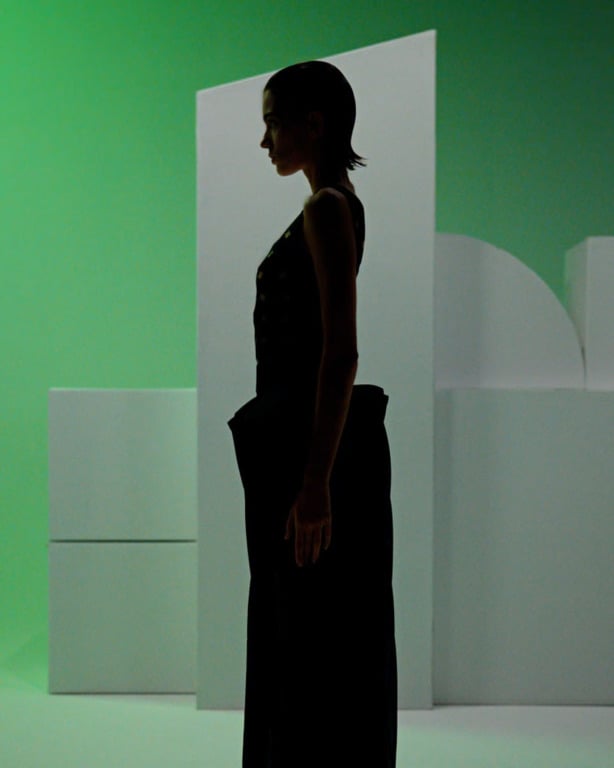
A still from the film. Photo courtesy Akris.
How do you view your role as a designer after 2020?
Knowing now how much time I had for this, I’m rethinking the schedule of my development process. My problem is still the whole fabric development part, which takes time. On another note, I have a collection that is not even half the size of a normal one, but I don’t think that I missed a lot.
If we have more time, we can also think a little bit more deeply, and I think this is one big takeaway. On another note, this year has been a reminder to use our resources wisely—if I have a fabric that’s 10 years old, I don’t care. If I feel it’s the right one for the moment, I’ll use it. And I’m spoiled because I have this archive that my father started in the 1940s, and I can always plunge in when I need inspiration. I think recycling fabrics gives even more meaning to the necessity of what fashion should be. Fashion should be fun and exciting, but for this level of reach and investment, it should always be made [with] a lot of intent. It should inspire a reason to be.
Watch the Akris Spring 2021 show here.